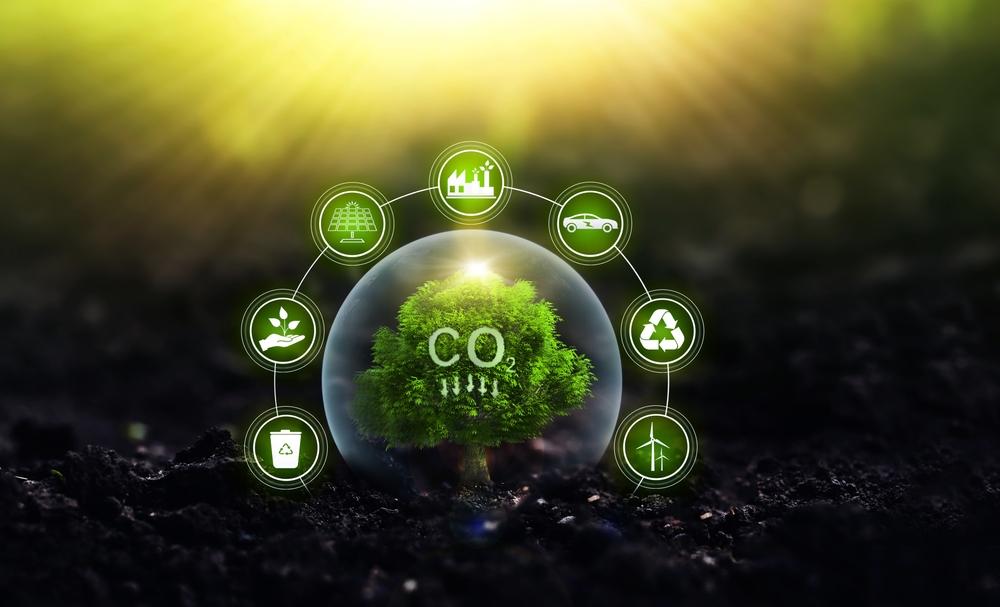Affordable Carbon Management Solutions in the United States: Options, Pricing, and Top Companies
Explore cost-effective carbon management options in the US. For more information, use a quick search below.
As climate change intensifies, carbon management has become a crucial aspect of sustainability strategies for businesses across the United States. Companies are increasingly investing in technologies and practices to reduce, manage, and offset their carbon footprints. Understanding the available options and associated costs is essential for organizations aiming to meet environmental goals while managing expenses. This article explores the most popular carbon management options in the U.S., their typical pricing, and some of the most affordable service providers.
Understanding Carbon Management Options
Carbon management involves assessing, reducing, capturing, and offsetting carbon dioxide (CO₂) emissions generated by business operations. The goal is to reduce the environmental impact while aligning with regulations and sustainability goals. Here are the most common carbon management options available:

1. Carbon Accounting Software
Carbon accounting software helps organizations measure, monitor, and report their greenhouse gas (GHG) emissions. These platforms provide detailed insights into carbon footprints by calculating emissions from various activities, such as energy consumption, transportation, and production processes.
Most carbon accounting software integrates with existing enterprise systems to automate data collection, making the reporting process more efficient. These platforms also help companies comply with regulations like the Carbon Disclosure Project (CDP) and the Greenhouse Gas Protocol.
Pricing:
Pricing for carbon accounting software varies based on company size, data complexity, and features. Annual subscription costs typically range from $2,000 to $20,000. For instance, Greenly, a popular choice, offers scalable pricing starting at around $2,000 for small enterprises and can go up to $20,000 for larger corporations with comprehensive needs. Custom solutions may involve additional setup fees and ongoing support costs.
2. Carbon Capture and Storage (CCS)
Carbon capture and storage is a technological approach to reducing CO₂ emissions from industrial processes. CCS involves capturing carbon dioxide at the emission source and transporting it to a storage location, often deep underground. This process is particularly useful for heavy industries such as manufacturing, oil and gas, and power generation.
CCS projects can significantly reduce emissions from sources where decarbonization through renewable energy is not feasible. Facilities implementing CCS often partner with specialized companies to design and maintain the required infrastructure.
Pricing:
Costs for CCS depend on several factors, including the concentration of CO₂, the capture technology used, transportation methods, and the storage location. On average, capturing CO₂ from industrial processes costs between $13 and $100 per ton. However, capturing CO₂ from more dilute sources, like power plants, can cost up to $300 per ton. These figures include equipment, maintenance, and operational expenses.
3. Direct Air Capture (DAC)
Direct air capture technologies actively remove CO₂ from the atmosphere, rather than just from industrial sources. These systems use chemical reactions to capture CO₂, which is then stored or utilized for industrial applications.
DAC is an emerging technology, and while currently expensive, advancements are expected to reduce costs significantly. Companies using DAC often integrate it with utilization processes, like producing synthetic fuels, to enhance economic viability.
Pricing:
Current costs for DAC are high, typically ranging from $250 to $1,000 per ton. Small-scale implementations, like those by Climeworks, report costs at the higher end. As the technology matures and scales, projections suggest that costs could decrease to around $250 per ton. Investing in DAC is generally more suitable for large corporations with substantial sustainability commitments.
4. Carbon Offset Programs
Carbon offsetting involves compensating for emissions by investing in projects that reduce or remove CO₂ from the atmosphere. Common offset initiatives include reforestation, renewable energy projects, and methane capture from landfills. Companies purchase carbon credits to neutralize their emissions, supporting sustainability projects globally.
Offsets are often used as a supplementary measure when direct emission reductions are not possible. Organizations must ensure that the chosen offset projects are verified and accredited to guarantee genuine environmental benefits.
Pricing:
Carbon offset costs vary widely, from as little as $5 per ton to over $50 per ton, depending on the project type and location. Renewable energy credits are typically cheaper, while nature-based solutions like reforestation can be more expensive. Platforms like Carbonfund.org offer transparent pricing and a range of projects to choose from.
5. Renewable Energy Certificates (RECs)
RECs represent proof that electricity has been generated from renewable sources. Companies purchase RECs to support clean energy production, even if their direct energy usage comes from fossil fuels. RECs are an effective way for organizations to claim partial or full renewable energy use without changing their energy provider.
RECs can also help companies meet sustainability targets by balancing carbon emissions from non-renewable energy consumption. The certificates are sold by renewable energy producers and are often used in corporate sustainability reporting.
Pricing:
The cost of RECs varies, generally ranging from $1 to $50 per MWh, influenced by the energy source and geographic region. Wind and solar RECs are often more affordable than biomass or geothermal options. Large companies purchasing RECs in bulk may receive significant discounts.
Affordable Carbon Management Companies in the U.S.
Several companies offer comprehensive and affordable carbon management solutions tailored to various organizational needs:
1. Greenly
Greenly offers affordable carbon accounting software with pricing starting at $2,000 annually. Their platform is designed for businesses of all sizes and includes automated data collection and emission tracking. They also provide reporting tools to meet compliance standards.
2. Carbon Clean Solutions
Focused on industrial carbon capture, Carbon Clean Solutions delivers low-cost CCS systems to manufacturing and energy sectors. Their efficient capture technology reduces per-ton costs, making it a viable option for heavy emitters.
3. Carbon Lighthouse
Specializes in energy efficiency and emission reduction for commercial buildings. Their data-driven approach optimizes energy use, resulting in both cost savings and reduced carbon output. Their services are tailored for enterprises aiming to reduce operational emissions.
4. NativeEnergy
Offers carbon offset solutions tailored to corporate clients, including renewable energy and conservation projects. Pricing for offsets starts at around $10 per ton, making it an economical choice for small to mid-sized businesses.
5. ClimatePartner
Provides a full range of carbon management services, from carbon footprint analysis to offset purchasing. They offer transparent pricing and customizable packages, catering to businesses aiming for carbon neutrality.
Carbon management is no longer a choice but a necessity for organizations committed to sustainability. By selecting the right carbon management strategy, companies can significantly reduce their environmental impact while maintaining compliance with regulatory requirements.
From accounting software to advanced carbon capture technologies, the key to successful carbon management lies in understanding your organization’s specific needs and budget. Choosing a reliable and cost-effective service provider can make the journey to carbon neutrality more manageable and impactful.











